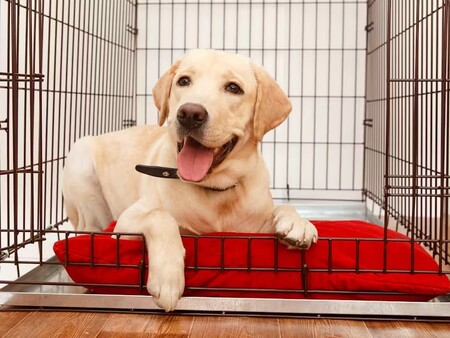Resource guarding — when a dog growls, stiffens, or even snaps to protect food, toys, beds, or other valued items — can be alarming. But it’s also a completely natural canine behavior.
In the wild, guarding resources is how dogs survive. In our homes, though, this instinct can lead to stress and safety risks if it’s not managed properly. The good news? With patience, consistency, and empathy, resource guarding can be improved and often completely resolved.
What Is Resource Guarding?
Resource guarding happens when a dog feels the need to defend something valuable — usually food, toys, bones, sleeping spots, or even people. The behavior can look like:
-
Stiffening or freezing when approached
-
Growling or showing teeth
-
Snapping or lunging
-
Hovering over an item or moving it away from you
It’s important to understand: your dog isn’t being “dominant” or “bad.” They’re afraid of losing something important. Their behavior comes from anxiety, not defiance.
Why Dogs Guard
Dogs may resource guard for a few reasons:
-
Past experiences: If they’ve had to compete for food or toys before, guarding feels safer.
-
Lack of trust: They haven’t learned that humans are safe around their valued things.
-
High value items: Some treats or chews trigger stronger instincts than others.
-
Genetics and personality: Some breeds and individual dogs are naturally more possessive.
Understanding why your dog guards helps you respond with compassion instead of punishment.
What Not to Do
It’s easy to panic when your dog growls, but reacting harshly often makes things worse. Avoid:
-
Punishing the growl – This can suppress the warning without addressing the fear, making bites more likely.
-
Grabbing items away – This confirms your dog’s fear that you’re taking their resources.
-
Challenging or intimidating your dog – Confrontation destroys trust and increases stress.
Instead, think of your goal as changing your dog’s emotional response from “Oh no, you’re going to take it!” to “Yay, you make good things happen!”
Step-by-Step: How to Work with Resource Guarding
1. Management First
Set up your environment to prevent conflict.
-
Feed your dog in a quiet area away from people or other pets.
-
Pick up high-value chews or toys when you can’t supervise.
-
Give each dog in a multi-dog household their own space for eating and resting.
Management prevents rehearsal of guarding behavior — and keeps everyone safe.
2. Build Trust Around Resources
Start teaching your dog that your approach means good things happen.
-
When your dog is eating or chewing, calmly walk by and toss a higher-value treat (like chicken) near them.
-
Walk away immediately — no pressure, no reaching.
-
Over time, your dog learns that you approaching food = bonus treats appear.
Gradually, they’ll begin to look happy when you approach instead of tense.
3. Trade, Don’t Take
If your dog has something you need to remove, teach a “trade” cue.
-
Offer a high-value treat (“Want to trade?”)
-
Wait for your dog to drop the item voluntarily.
-
Reward generously and then give the item back if it’s safe to do so.
Trading teaches your dog that giving things up doesn’t mean losing — it often means gaining something even better.
4. Desensitize Slowly
If your dog guards specific things (like a food bowl), use gradual desensitization:
-
Start far enough away that your dog is relaxed.
-
Toss treats near their bowl and retreat.
-
Over several sessions, slowly move closer as your dog remains comfortable.
Never rush this process — progress happens at your dog’s pace.
5. Reinforce Calm Behavior
Notice and reward when your dog is relaxed around their possessions. Calm behavior deserves attention just as much as guarding does.
When to Get Professional Help
If your dog has already bitten or their guarding is severe, don’t go it alone. Seek help from a qualified, positive reinforcement-based trainer or behavior consultant.
They’ll design a personalized plan that keeps both you and your dog safe while addressing the root of the issue.
Final Thoughts: Empathy Over Ego
Resource guarding isn’t about dominance or disrespect — it’s about fear, trust, and survival instincts.
Your dog isn’t challenging you; they’re communicating discomfort. By listening to those signals and working with compassion, you can transform guarding into confidence.
The key is to build trust, not tension — and to show your dog that you’ll never take what’s theirs without giving something better in return.
That’s how you turn fear into faith… and guarding into gratitude.







